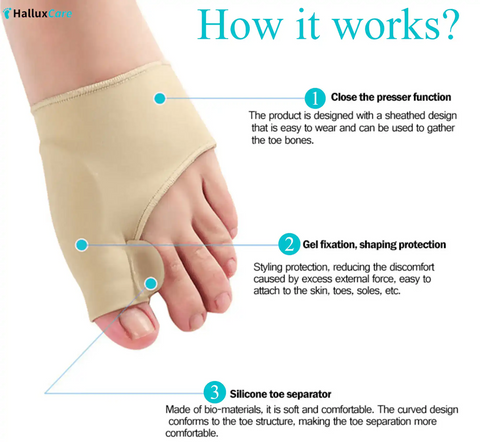Recovering from Bunion Surgery: Real Stories, Real Struggles, and Real Relief
Author: Dr. Lauren Mitchell, DPM | Last Updated: Aug 10, 2025
If you're navigating the long road of bunion surgery recovery, you're not alone. According to the American College of Foot and Ankle Surgeons (ACFAS), full recovery from bunionectomy can take anywhere from 6 weeks to 6 months, depending on the type of surgery and individual healing factors[1]. A recent Reddit post captures the realness of this process—specifically, the 11-week mark—highlighting the physical and emotional challenges faced during recovery. Whether you're a few weeks into healing or considering surgery, this journey underscores the importance of patience, preparation, and supportive tools.
Disclaimer: This content is for informational purposes only and is not a substitute for professional medical advice. Always consult with a licensed healthcare provider for diagnosis and treatment options.
💡 Key Takeaways from an 11-Week Post-Bunion Surgery Update
1. Progress Takes Time
- At 11 weeks post-op, walking is possible but may still involve discomfort.
- Even short walks can cause thigh soreness and pain in the surgical toe.
- Pain is mild but persistent—a reminder that recovery is non-linear.
2. Your Environment Plays a Role
- Working from home with the ability to elevate your feet reduces swelling, as recommended by physiotherapists[2].
- Short, controlled walks help maintain joint mobility and circulation.
3. Planning a Vacation During Recovery?
- City vacations with lots of walking can strain healing joints.
- Plan for ample rest breaks—a coffee or beer stop can double as a recovery break 🍻.
- Set realistic activity goals to avoid setbacks.
4.9 ⭐⭐⭐⭐⭐ ( 1843 reviews )
👣 Tips for Managing Bunion Surgery Recovery More Comfortably
1. Use Orthopedic Support Tools
- Bunion sleeves help realign the toe joint and reduce pressure and friction on sensitive areas.
- Compression improves circulation and helps reduce swelling, especially during the early recovery stages[3].
2. Monitor Your Pain Honestly
- Keep a simple pain log to monitor trends.
- If pain increases or becomes sharp, consult your podiatrist—this could signal complications like nerve irritation or infection.
3. Choose the Right Footwear
- Soft, wide-toe box shoes offer the best support. Consider podiatrist-recommended footwear brands like Orthofeet or New Balance.
- Avoid heels or tight shoes until cleared by your care provider.
4. Break Up Your Activities
- Multiple short walks are better than one long walk—they reduce fatigue and swelling.
- Traveling? Map out rest spots and consider compression sleeves or orthopedic inserts for added support.
💬 Encouragement from the Community
Real stories like the Reddit user's honest 11-week update remind us that recovery isn’t always smooth. Her switch from “I’ll be fine” to “this might spoil my vacation” is a sentiment many post-op patients can relate to. By staying realistic and using tools like bunion sleeves, she’s found a way to stay positive and mobile.
Still on the Fence About Bunion Relief Tools?
Don't underestimate the effectiveness of consistent care. Whether you're recovering from surgery or managing bunion discomfort non-surgically, having the right support makes a measurable difference.
If you're seeking non-invasive relief from bunion pain, the Orthopedic Bunion Pain Relief & Correction Sleeve offers alignment support and pain reduction.
For lateral foot pain or bunionettes, the Tailor's Bunion Bunionette Pain Relief Protection Sleeves provide targeted cushioning and protection.
To hydrate the skin and reduce inflammation around the bunion site, the Jamaica Black Castor Oil Soothing Oil is a natural option for both skincare and hair health.
Let's Talk
Have you undergone bunion surgery or are you preparing for it? What helped your recovery most—rest, support tools, or maybe a mindset shift? Share your experience below. Your journey might just help someone else feel a little less alone. 👇
❓ Frequently Asked Questions (FAQs)
How long does it take to recover from bunion surgery?
According to the American Orthopaedic Foot & Ankle Society, most people can walk normally in 6–12 weeks, but full healing and swelling reduction may take up to 6 months[4].
Is it normal to still feel pain 11 weeks after surgery?
Yes, mild pain or discomfort is still common at this stage, especially with increased activity. Persistent or worsening pain, however, should be evaluated by your surgeon.
Can bunion sleeves help after surgery?
Yes, podiatrists often recommend bunion sleeves post-op to provide gentle compression, protect healing tissue, and assist with toe alignment during recovery[3].
What kind of shoes should I wear during recovery?
Look for shoes with a wide toe box, cushioning, and arch support. Avoid tight-fitting or high-heeled shoes until fully healed.
Can I travel after bunion surgery?
With your doctor’s approval, travel is possible. Consider your activity level, plan for rest breaks, and use orthopedic aids to reduce strain while walking.
🧠 Sources & Citations
- American College of Foot and Ankle Surgeons (ACFAS). “Bunion Surgery Recovery Timeline.” acfas.org
- National Health Service (NHS). “Bunion Surgery Recovery Advice.” nhs.uk
- American Podiatric Medical Association (APMA). “Post-Op Care for Bunions.” apma.org
- American Orthopaedic Foot & Ankle Society. “Understanding Bunion Surgery.” aofas.org




